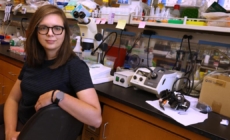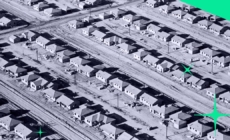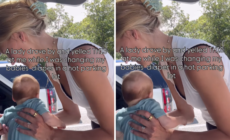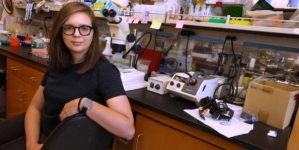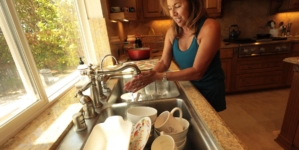-
How to Watch Chelsea vs AC Milan: Live Stream Club Friendlies, Start Time, Lineups, TV Channel - 7 mins ago
-
Take this week’s American Culture Quiz and test yourself on park pioneers and baseball bests - 28 mins ago
-
How UCLA’s research faculty is grappling with Trump funding freeze - 39 mins ago
-
LIV Golf Chicago: Round 2 Highlights | LIV on FOX - 41 mins ago
-
Justin Rose Opens Up About Battling Illness During FedEx St. Jude Championship - 46 mins ago
-
UEFA criticized over tribute after soccer star is killed in Gaza - 48 mins ago
-
Will we ever get enough housing? Here are reasons to say ‘yes’ - about 1 hour ago
-
LIV Golf Chicago: Dean Burmester Leading After Round 2, Team Leaderboard Is Tight - about 1 hour ago
-
Mom Changes Baby’s Diaper in SUV Trunk—Stunned by What Stranger Yells - about 1 hour ago
-
Lindsay Lohan raises son in Dubai to escape paparazzi harassment - 2 hours ago
Despite record amounts of trash, Angelenos are optimistic we’ll dig our way out
It doesn’t take an awful lot of investigating to see that we’re swimming in an ocean of waste: There are the maxed-out landfills, illegal trash dumping in the desert, choked-up rivers, strangled sea turtles and skyrocketing trash collection fees.
But there’s disagreement about what it portends about our future relationship with waste.

Los Angeles knows how to weather a crisis — or two or three. Angelenos are tapping into that resilience, striving to build a city for everyone.
Many in the waste and environmental space believe the current situation is so untenable that strict anti-plastic and waste laws will soon be implemented — and we’ll have less persistent waste. Others, however, are more cynical, and point to a slew of economic, production, marketing, judicial and policy indicators that suggest things are likely only to get worse.
By the time 2050 rolls around, “great swaths of California land will have become sacrifice zones contaminated with microplastics and toxic chemicals from uncontrolled dumping of organics with high levels of plastics, synthetic textile and other nonorganic contamination,” said Jan Dell, president and founder of the Laguna Beach-based nonprofit Last Beach Cleanup. “Some residences and neighborhoods will be declared uninhabitable.”
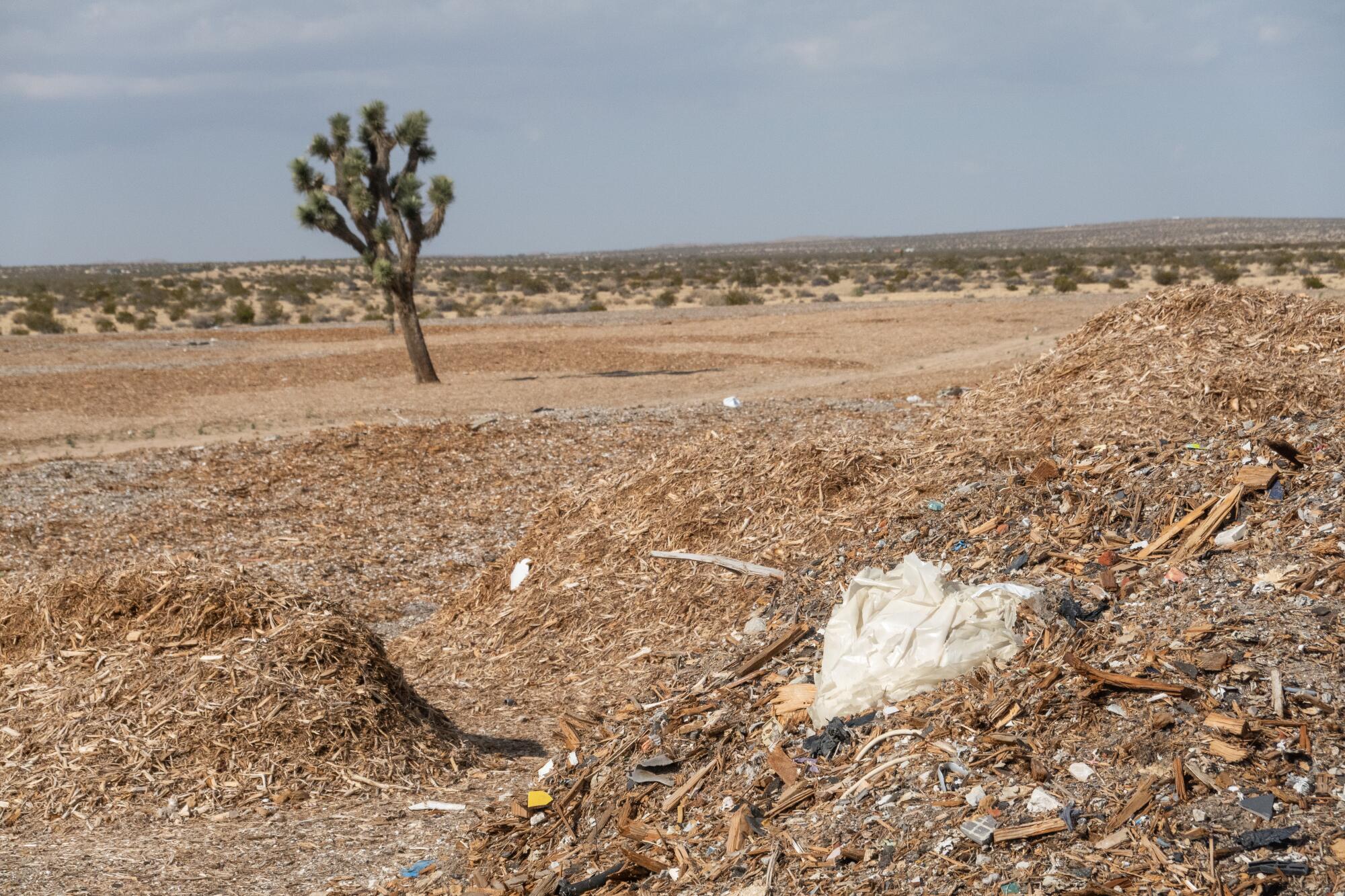
This location south of East Avenue M in Lake Los Angeles holds mulch, trash and construction debris. The site was found by a resident who followed a truck onto the dirt roads.
(Myung J. Chun / Los Angeles Times)
She noted the rampant dumping that’s already happening in the Antelope Valley, and suggested that even if the state’s landmark plastic legislation is implemented in a way that legislators intended — which includes a requirement that would reduce the amount of single-use plastic sold and distributed in the state — “CalRecycle will never make [it] … work. They can’t even effectively ban foam cups.”
She and others, including Susan Keefe of Beyond Plastics, another nonprofit, said the plastic and packaging industries have invested too much in ramping up plastic production to allow legislation or bans to stop them. And consumers have become so accustomed to the convenience of single-use plastic that change is unlikely to happen without a push from the government.
“It’s hard to be super positive when you see how much waste we generate,” said Keefe, Beyond Plastic’s Southern California director. “I think that we’re going to see more illegal dumping, more waste incineration plants built, and we’ll run out of landfills. If we continue on the trajectory that we’re on, I don’t see how we’re not going to be swimming in it.”
But others, including several waste experts and community organizers across the Los Angeles region, say change is afoot. And by the time 2050 rolls around, we’ll all have adopted new, less polluting, ways of consuming and discarding products.
There are no data or widespread evidence to back up these claims; just hope, determination and a few small-scale examples in which community-organized composting and educational outreach campaigns — with help from groups such as LA Compost and Los Angeles Alliance for a New Economy, or LAANE — appeared to have taken hold and made local change.
“By 2050 we’ll be in a completely new paradigm,” said Ryan Jackson, executive director of LA Compost — a composting advocacy organization — and former director of the city’s Department of Public Works. “We’ll be in a resource recovery model, where nothing’s wasted, and we’ll be enjoying a circular economy. … It feels dramatic, but from what we’ve seen up close with our organization, it’s very much possible.”
Jackson sees the shift as one driven organically by neighborhoods and communities that have had an opportunity to see how they could live differently. Members of his organization, which has worked in schools, community gardens and farmers markets from Long Beach to Calabasas, say they’ve witnessed positive shifts in behavior and attitudes when community compost hubs have been established.
But, along with others, he says that government needs to play a role, too.

Erika Schwerdt, community organizer, shows an illegal mulch dump between homes and Wilsona Elementary and Challenger middle schools in Lake Los Angeles in April.
(Myung J. Chun / Los Angeles Times)
“We’re looking at a future [in 2050] where we think the city will be in a much better place because RecycLA will have been in effect for 30 years,” said Victor Sanchez, the executive director of Los Angeles Alliance for a New Economy, or LAANE.
RecycLA is a 2017 Los Angeles-based recycling program, which — in a public partnership with private waste hauling companies — promotes recycling and requires the diversion of waste material from landfills on an escalating basis. Its primary purpose is to get L.A. closer to “zero waste” — a plan adopted by the county’s supervisors in 2022, which lays out a framework designed to reduce the use of landfills, maximize the use of natural resources and recover materials for beneficial use or reuse.
The idea behind it is to create a circular economy, in which products and packages are designed and manufactured with materials that can be reused, composted or recycled.
So far, the law has been met with mixed success. Diversion from landfill has increased, but so too has a surge of illegal waste dumping in the Antelope Valley suggesting the law may be having some unintended consequences. Critics point to a dearth of recycling and composting infrastructure in the city and county as part of the problem.
There has also been trouble at the state level.
In 2022, Gov. Gavin Newsom signed Senate Bill 54, which requires that product and packaging manufacturers maintain financial responsibility for their products from beginning to end — theoretically incentivizing companies to produce items that won’t contribute to a glut of waste.
Specifically, the law requires that by 2032, plastic and packaging companies reduce single-use plastic packaging by 25% from 2025 levels. It also requires that the remainder of single-use plastic packaging and foodware items still being sold and marketed are 100% compostable or recyclable. In addition, packaging producers will have to bear the costs of their products’ end-life (whether via recycling, composting, landfill or export) and figure out how to make it happen — removing that costly burden from consumers and local governments.
Newsom’s administration has since backtracked on regulations that would have helped to achieve these goals, and instead has written new draft regulations that critics contend are industry-friendly and watered down.
Despite these regulatory failures, and an acknowledgment that “capital” and corporate interests have a knack for influencing the implementation of laws and for finding loopholes in legislation — such as the time California banned plastic bags at retail stores, only to discover they’d created an exception for thicker “reusable” plastic bags, and plastic bag waste actually increased — there is reason to hope, said Sanchez.
Yes, there have been some short-term failures, he said, but “that’s going to happen when you overhaul an entire system, right?”
He said he has seen “beacons of hope” in his work with communities where people are “breathing the air … dealing with the smell and constant pollution,” of nearby landfill and waste sites. He said these communities know the risks, dangers and destructive consequences of our current waste system. And in many cases, they are successfully fighting for change — by pushing to shut down polluted landfills and mobilizing workers in these systems to demand fair compensation and safe working conditions.
“The challenge that’s upon us is to build more shared ownership and awareness around waste. We have to make the case as to why it’s important to invest in a system that works, because, at the end of the day, it’s about investing in ourselves. It’s really existential,” he said.
Even representatives from the city’s private waste industry are hopeful — despite being on the wrong side of a lawsuit suggesting many of them are delivering unpermitted waste to the Antelope Valley.
A lawsuit filed this year in U.S. District Court in Los Angeles by Antelope Valley residents claims that waste-hauling companies including Athens Services and California Waste Services are dumping hazardous substances without authorization, which the companies deny. Athens noted that the law encourages the distribution of compostable material to “farmers and other property owners for beneficial use.”
Jessica Aldridge, director of sustainability and zero waste services at Athens Services, an L.A.-based waste hauling company, was not in a position to answer questions about the lawsuit, but said her company is optimistic about what “the environmental community, social justice and waste communities are trying to achieve.”
She agreed with Sanchez that while there may be some temporary political and regulatory setbacks, California lawmakers “have a positive goal in mind, and they’re setting up the regulations and the infrastructure” in pursuit of a cleaner environment and a more circular economy.
But Keefe, the Beyond Plastics advocate, says all this hope for circular economy laws and small community action is misplaced, that we’re not going to make a dent in waste generation as long as single-use plastic manufacturers produce and sell their products.
“Plastic recycling is a myth,” she said, pointing to the abysmally low amount of plastic that is actually recycled, as well as the lawsuit that California’s attorney general filed last year against ExxonMobil. The suit alleges that the fossil-fuel company knowingly deceived the public about plastic recycling for years, leading to the plastic pollution crisis we are facing today.
“Until we stop focusing on plastic recycling, we’re never going to get there,” said Keefe.
Source link


